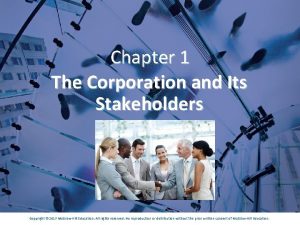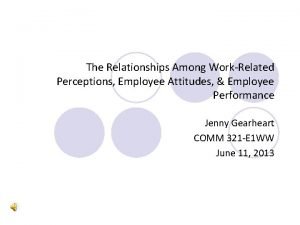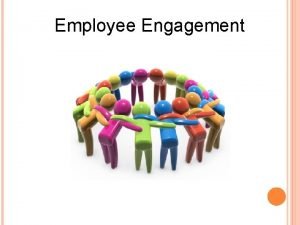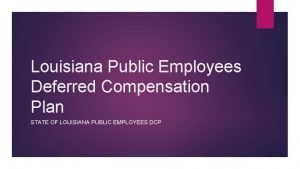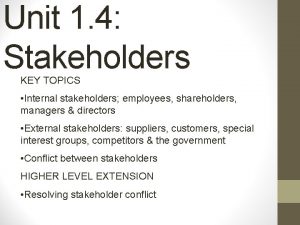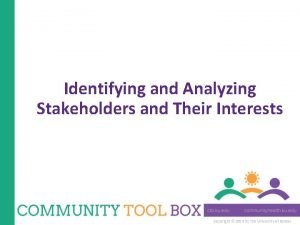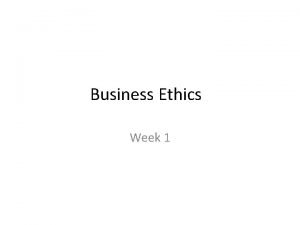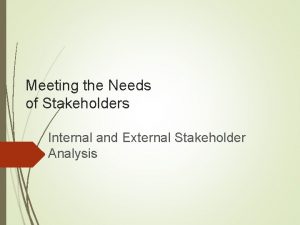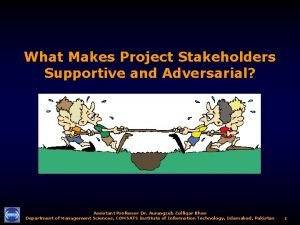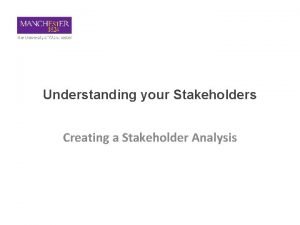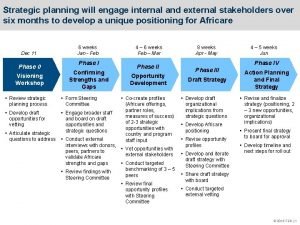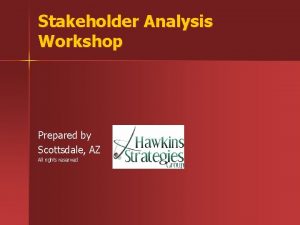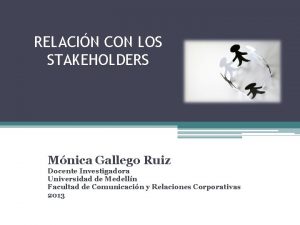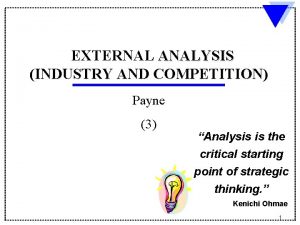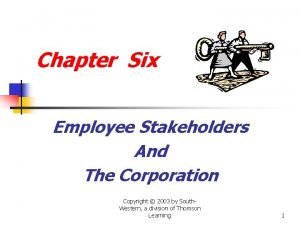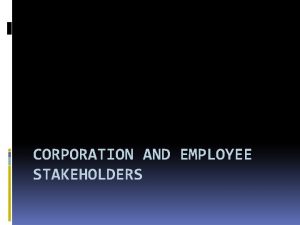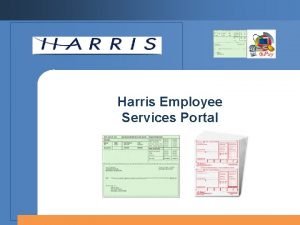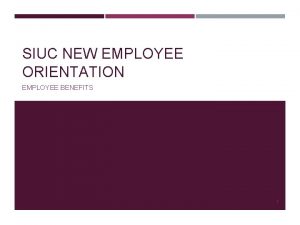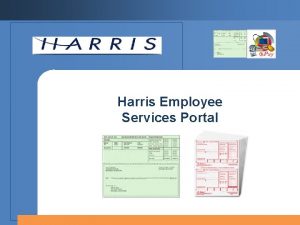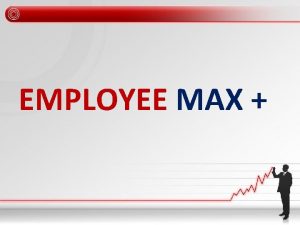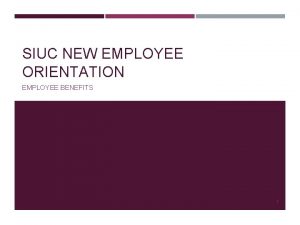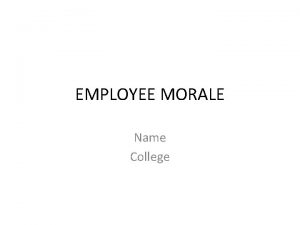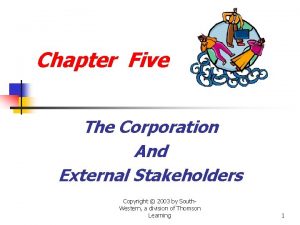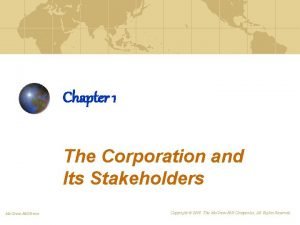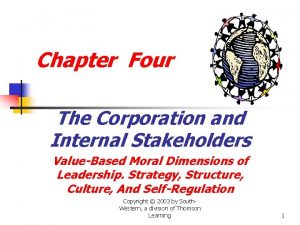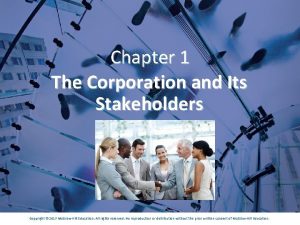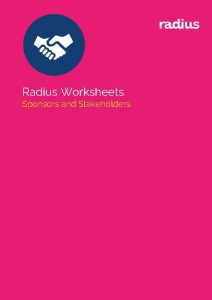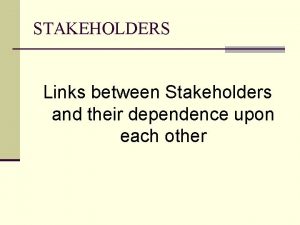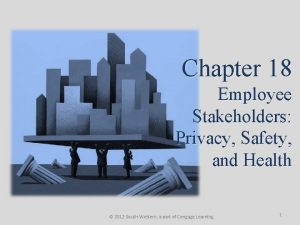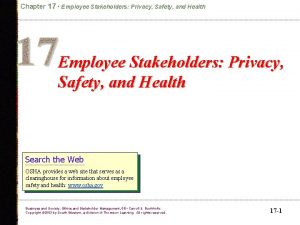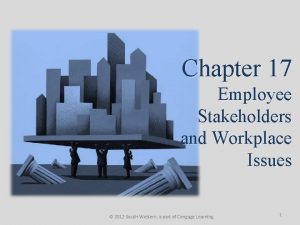CHAPTER SEVEN Employee Stakeholders and The Corporation Trends




























- Slides: 28

CHAPTER SEVEN Employee Stakeholders and The Corporation

Trends in Employment Relationships Shift to knowledge work No ‘lifetime’ employment Income shift (down for low-middle professionals; up for highly skilled) Desired balance between work and personal life

Changing Workforce and Accompanying Issues Aging workforce – age discrimination Increased number of women – sexual harassment GLBT issues – health care provisions Increasing cultural mix – conflicting values and beliefs Educational gaps, lack of skilled trade workers – educational and skill challenges Disability issues – discrimination Balancing work and life

Generational Issues GI Generation – born between 1901 -1925 � Great Depression, World War II Silent Generation – born between 19261944 � Patriotism Baby Boomers – born between 1945 -1964 � Vietnam, Civil Rights, Instant Gratification Generation X – born between 1965 -1981 � Civil and Self-sacrifice Rights, Diversity, value work/life balance Generation Y/Millenials – born between 1982 -2003 � No significant wars, sense of entitlement, security

Solving Generational Issues Identify problem areas Get to know the individuals inside their roles and positions Understand anticipate expectations of different generations Develop a personal growth and development plan for each employee Engage and communicate Be a leader, not a friend

Barriers and Success Strategies for Women Barriers: 1. 2. 3. 4. 5. Lack of significant general management or line experience (47%) Exclusion from informal networks (41%) Stereotyping and preconceptions of women’s roles and abilities (33%) Failure of senior leadership to assume accountability for women’s advancement (29%) Commitment to personal/family responsibilities (26%) Success Strategies: 1. 2. 3. 4. 5. Exceeding performance expectations (69%) Successfully managing others (49%) Developing a style with which male managers are comfortable (47%) Having recognized expertise in a specific content area (46%) Taking on difficult or highly visible assignments (40%)

Figure 7. 2: Evolution of Work and Family Life Systems

Employment at Will Doctrine The right of an employer to fire an employee without giving a reason and the right of an employee to quit when he or she chooses (47 states have EAW in some form) � Lack of Good Faith and Fair Dealing � Public Policy Exceptions � Implied Contracts Other limits placed on EAW through: Minimum wage laws Discrimination laws Sexual harassment laws Workplace health and safety laws Assembly laws

Employee Rights based on a ‘moral claim’ � Right to Freedom, including negative freedom � Right to Well-being, including health and safety Rights based on a ‘legal claim’ The right not to be terminated without just cause. � The right to due process. � The right to privacy. � The right to know. � The right to workplace health and safety. � The right to organize and strike. � Rights regarding plant closings. �

Just Cause Standards notification reasonable rule investigation prior to discipline fair investigation proof of guilt absence of discrimination reasonable penalty

Due Process Requirements Right to a public hearing Right to have peer evaluations Right to obtain external arbitration Right to an open, mutually approved grievance procedure

Legally-Upheld Privacy Violations Intrusion (locker room and bathroom surveillance) Publication of private matters Disclosure of medical records Appropriation of an employee’s name for commercial uses Eavesdropping on employee conversations and retrieving or accessing employee e-mail (if unauthorized) Permissible inquiries (if job related): � � � Criminal history inquiries Credit history inquiries Access to medical records

Other Employee Issues Polygraph and psychological testing Workplace surveillance Internet usage Dating in the workplace Drug testing and privacy rights Genetic discrimination Smoking in the workplace FMLA

Guidelines for Employee Monitoring Policies Inform employees not to assume privacy in the workplace. Require employees to acknowledge the company’s privacy policy in writing. Use private information only for legitimate purposes. Limit access to private information about employees to only those with a need to know. Secure employee medical records separately from other personnel files. Obtain signed permission releases and waivers before using an employee’s name or photograph in any commercial advertisement, promotional material or training film.

Drug Testing Guidelines Tests should be administered only for jobs that have a clear and present potential to cause harm to others. Procedural testing limitations should include previous notice to those being tested. Employees tested should be notified of the results. Employees tested should be informed that they are entitled to appeal the results. The employer should demonstrate how the information will be kept confidential (or destroyed).

Four Steps for Managers to Use When Preparing Corporate Privacy Policies 1. 2. 3. 4. Prepare a privacy impact statement. Construct a comprehensive privacy plan. Train employees who handle personal information. Make privacy part of social responsibility programs.

Responsibilities Employer: � Fair, competitive wages � Safe working environment � Working conditions that empower employees (Quality of Work Life) Employee: � Fulfill contracted obligations � Follow goals, rules, policies, work plans � Offer competence in job assignments � Perform productively (timeliness, dependable, responsible, respectful)

Title VII of the Civil Rights Act of 1964 Outlaws discrimination on the basis of gender, race, color, religion, or national origin in any term, condition, or privilege of employment illegal Applies to companies with 15 or more employees The law prohibits discrimination in hiring, classifying, referring, assigning, promoting, training, retraining, conducting apprenticeships, firing, and dispensing wages and fringe benefits. Created the Equal Employment Opportunity Commission (EEOC) to administer the law.

Civil Rights Act of 1991 Punitive and Compensatory Damages � $300, 000 cap / 500 employees � Smaller firms face smaller fines Burden of Proof � On employer (defendant) to prove no discrimination (disparate treatment or adverse impact) occurred � Job relatedness � Business necessity

Other Employment Laws Age Discrimination in Employment Act – 1967 Over age of 40 � Protects against discrimination in hiring, firing, promotions, pay, job conditions, etc. � Equal Pay Act – 1963 � Prohibits pay and benefit discrimination based on gender Family Medical Leave Act – 1993 Up to 12 weeks unpaid leave per year � Have to work 1 year for employer before eligible � Coverage for illness or birth/adoption � Self, child, spouse, parent (not in-laws), legal dependent � 50 employees within a 75 mile radius �

Affirmative Action Affirmative action does not require hiring unqualified minority group members over qualified white males. All individuals must be qualified for the positions in question. Qualified women and minority members can be given preference morally, on the basis of gender or race, over equally qualified white males to achieve affirmative action goals. Qualified women and minority members can be given preference morally over better-qualified white males, also, to achieve affirmative action goals. Companies must make adequate progress toward achieving affirmative action goals even though preferential hiring is not mandatory.

Ethics of Affirmative Action Principle of Justice Utilitarian Principle Rights Principle

Rulings Concerning Affirmative Action Bakke v. University of California Weber v. Kaiser Aluminum Stotts v. City of Memphis Adarand Constructors v. Pena Hopwood v. State of Texas U of M cases

Sexual Harassment Unwelcome sexual advances, requests for sexual favors, and other verbal or physical conduct of a sexual nature constitute sexual harassment when: � submission to such conduct is made either explicitly or implicitly a term or condition of an individual’s employment, � submission to or rejection of such conduct by an individual is used as the basis for employment decisions affecting such an individual � such conduct has the purpose or effect of unreasonably interfering with an individual’s work performance or creating an intimidating, hostile, or offensive working environment.

Management Guidelines to Prevent or Correctly Handle Harassment Develop an anti-harassment policy and a complaint procedure Communicate the policy and complaint procedure to every employee Quickly and effectively address all harassment complaints Provide adequate education and training for all employees and managers

Five Conditions Under Which Whistleblowing is Justified When the firm, through a product or policy, will commit serious and considerable harm to the public (as consumers or bystanders), the employee should report the firm. When the employee identifies a serious threat of harm, he or she should report it and state his or her moral concern. When the employee’s immediate supervisor does not act, the employee should exhaust the internal procedures and chain of command to the board of directors. The employee must have documented evidence that is convincing to a reasonable, impartial observer that his or her view of the situation is accurate and evidence that the firm’s practice, product, or policy seriously threatens and puts in danger the public or product user. The employee must have valid reasons to believe that revealing the wrongdoing to the public will result in the changes necessary to remedy the situation. The chance of succeeding must be equal to the risk and danger the employee takes to blow the whistle.

When Whistleblowers Should Not Be Protected When divulging information about legal and ethical plans, practices, operations, inventions, and other matters that should remain confidential and that are necessary for the organization to perform its work efficiently When an employee’s personal accusations or slurs are irrelevant to questions about policies and practices that appear illegal or irresponsible When an employee’s accusations do not show a conviction that a wrongdoing is being committed and when such accusations disrupt or damage the organization’s morale When employees complain against a manager’s competence to make daily work decisions that are irrelevant to the legality, morality, or responsibility of management actions When employees object to their discharge, transfer, or demotion if management can show that unsatisfactory performance or violation of a code of conduct was the reason for the decision

Managerial Steps to Prevent the Need for Whistleblowing Develop effective internal grievance procedures and processes that employees can use to report wrongdoings. Reward people for using these channels. Appoint senior executives and others whose primary responsibilities are to investigate and report wrongdoing. Assess large fines for illegal actions. Include executives and professionals who file false or illegal reports, who knowingly market dangerous products, or who offer bribes or take kickbacks.
 The corporation and its stakeholders
The corporation and its stakeholders Employee attitudes and employee performance
Employee attitudes and employee performance Employee attendance trends
Employee attendance trends Louisiana deferred compensation program
Louisiana deferred compensation program The seven virtues series
The seven virtues series Primary secondary stakeholders
Primary secondary stakeholders Key internal and external stakeholders
Key internal and external stakeholders Software
Software Stakeholders and their interests
Stakeholders and their interests Specific and pervasive boundaries for behavior
Specific and pervasive boundaries for behavior Stakeholders internal and external
Stakeholders internal and external Stakeholders in water and sanitation
Stakeholders in water and sanitation Adversarial stakeholders
Adversarial stakeholders Understanding your stakeholders
Understanding your stakeholders C level stakeholders
C level stakeholders Real estate stakeholders
Real estate stakeholders Stakeholder classification
Stakeholder classification Internal vs external stakeholders
Internal vs external stakeholders External stakeholders
External stakeholders Who are stakeholders of a company
Who are stakeholders of a company Scottsdale explantation
Scottsdale explantation Stakeholders scuola
Stakeholders scuola Stakeholders
Stakeholders Stakeholders scuola
Stakeholders scuola Internal stakeholders examples
Internal stakeholders examples Primary secondary stakeholders
Primary secondary stakeholders Stakeholder approach
Stakeholder approach Ford motor company stakeholders
Ford motor company stakeholders Interne stakeholders
Interne stakeholders
